HIStalk Interviews Tom Carson, CEO, MD-IT
Thomas Carson is president and CEO of MD-IT of Boulder, CO.
Tell me about yourself and about MD-IT.
I’m a product of a Midwestern farm upbringing, so I’m probably a little bit conservative. I’m an operations and finance exec by formal training. I’ve been very, very fortunate in my professional career to have been part of several companies that grew from humble beginnings to plus-billion dollar revenue experiences.
Right before starting MD-IT, I was the chief financial officer for a computer products company that grew from $40 million on startup in 1990 to over $2 billion eight years later. In the three companies I was with before MD-IT, it’s not that we came up with something that was so revolutionary the world couldn’t stand it — it was that the markets we were in were changing dramatically. The changes were largely driven by customer demand and technology availability to satisfy that demand. That’s a key point when I look at the healthcare industry.
What prompted the founding of MD-IT ten years ago was a customer experience in the last company I was with. It was a VAR for Medical Manager. I went out to get acquainted with the guy and he gave me my first education into the healthcare space. Frankly, I was astonished. I had seen several industries make technology adoption a priority and it changed the way they worked, and here was the largest industry in the country that was clearly underinvested.
I remember thinking to myself at that time that this should be another opportunity to ride what has to be an impending wave of technology adoption and dramatic change. Nothing quite prepared me for the sort of resistance to change that I experienced when we got into it.
I think one of the big observations that I had after getting into MD-IT was that it wasn’t really market driven. The things that were being imposed on doctors – or attempted to be imposed on doctors – weren’t anything of their choosing. The dynamics that I saw occurring in other industries weren’t occurring here.
MD-IT was started ten years ago to provide doctors in the ambulatory space with easy ways of completing the chart note. We believed that we had a better idea for doctors. We embedded speech recognition into a relational database system that doctors could put in their offices, complete their own documentation in real time, and have access to their charts. It would be faster and cheaper than the traditional transcription model.
We had modest success in finding early adopters who were excited about this. But what we discovered was that most doctors actually had pretty legitimate reasons for preferring a dictate-transcribe model. We said that if they have legitimate reasons for that preference, and if the technology is all that good, we should be able to accommodate that preference on the back end and create the digital useful records that all the rest of us have legitimate reasons for wanting, and to provide a solution that the doctors and the rest of society need.
That was what changed our business model five years ago. It was realizing that if you ever wanted to get adoption of electronic medical records in the ambulatory portion of the market, then it was going to require a melding of the service portion – the transcription portion – with the technology portion — the EMR. It wasn’t because we were in love with transcription. It’s because the doctor, who was our customer, preferred dictation.
Whether that dictation happens with a human, some kind of a technology, or a combination of the two didn’t really matter to us, but the second realization is that transcriptionists fill a pretty important quality role in the process. Recent studies support the fact that doctors, left to their own devices, aren’t terribly accurate documenters. The combination of dictation and experienced transcriptionists creates a high quality product.
So the elevator pitch is that your application is built around text documents and search technology, It’s not doctor-entered information and it’s not scanned documents information, it’s documents built from transcription.
The reality is that we accommodate all of the above. Effective medical documentation can come from all kinds of places. Doctors document this stuff in all different kinds of ways.
If they want to scan in documents, which typically happens when we take on new customers, we can accommodate that. We can scan them and parse them and get the data collected to be useful for archival and search purposes. If they want to import data from other sources, such as lab reports or images, that’s fine. We certainly accommodate that and import those electronically and tie them to a specific visit. If the doctor prefers to write by hand, that’s fine, we can accommodate that through a forms process and tablet technology. But certainly the bulk of the 20 million documents in our system are dictated and transcribed notes.
It seems that transcription firms are consolidating and I know MD-IT has acquired a number of them over the years. What do you see as the role of transcription? Are other EMR vendors wrong when they say that transcription and document management are not the way to move the EMR forward?
We’ve taken a whole generation of doctors, some 600,000 or 700,000 of them, and tried to move them from the way they’ve been taught. Most of them learned dictation as the primary means of documenting patient visits. All of a sudden, we’re trying to flip them from a process that they’re very familiar that drives how they were taught about clinical encounters. We’re saying all of a sudden that, yep, you have to change all that, and you have to change it now.
I think there’s a much more pragmatic approach to getting to electronic records. If we’re serious about trying to get everybody to usable records, it strikes me that step one is get doctors to use a system of some kind.
What MD-IT is all about is providing an incremental or gradual approach for a practice. And even doctors within a practice, because it’s not uncommon for a six-doctor practice to consist of maybe a couple of young guys who want to do their own input, maybe an older guy or two who isn’t going to change or will retire before they have to, and some folks who are sitting on the fence.
The experience we had with MD-IT early on was that we needed to find the early adopters, but in reality, that’s a problem for a practice. Now you’ve got different ways of doing things. The records end up in different places. If you provide a system that anybody can use, regardless of where they are in the adoption curve, then the possibility of getting everybody on is much higher. It may be that transcription diminishes dramatically as a part of this and we’re perfectly fine with moving that along. At the core of it, what we have is a medical documentation system that’s agnostic to how the data gets in.
Your competitors probably use eliminating transcription costs as a selling points. They probably also don’t really want to open up their products to transcription. Is it hard to make your case when competing with them?
No. For years, EMR vendors have sold as a key part of their value proposition the elimination of transcription costs, but it’s an argument that breaks down under examination. I think people are starting to catch on to that.
One of the things that just absolutely appalls me is that we read account after account of the economic benefits of practices adopting electronic medical record systems, yet I know first hand that what goes on in those practices is that doctors are all of a sudden spending a lot of unpaid time documenting and learning to use these systems. There’s a permanent productivity loss that just doesn’t go away.
If anybody really sat down and tallied up those costs in physician dissatisfaction and extra time spent, I don’t think it will be a bargain. You’ve got the most expensive resource in the healthcare delivery chain who’s doing an awful lot of clerical entry. It just doesn’t make sense unless they happen to have time on their hands.
There’s something peculiar to me about this notion that you’ve got a vendor group that tells their customers, “Look, suck it up and get used to this. This is how the world is changing.” At least in the last year and a half, people have begun to have that conversation. We have EMR vendor partners with whom we have deep interfaces and we’ve been very effective in creating what we think of as EMR optimization on behalf of those vendors.
Do you think the idea of doctors as data entry clerks won’t play and they will refuse to buy those systems, or do you think they’ll buy them but replace them down the road when they realize the HITECH money wasn’t worth it?
Probably a combination. A recent study found that there is an appallingly high rate of rescission once people get into this. The vendors aren’t stupid, but people aren’t talking about the bad experiences as much as they need to.
The way I think it finally gets resolved is that you’ll have a new generation of vendors such as MD-IT and others who are much more responsive to what the real needs of the customer are. Shareable Ink is one. If you look at Stephen Hau’s attitude about supporting his customer, it’s very much what a real world commercial transaction should be like. Listen to what the customer needs, and if they don’t like what you’re trying to get them to take, then give them something else. Don’t keep insisting that it’s their fault, not yours, that they aren’t adopting your product.
What about certification?
We’re in the process. We have a relationship with SLI in Denver, which is one of the six certifying bodies. We’re in the queue for sometime later this month to begin that whole process. We don’t see certification as an issue.
As an issue meaning for you to get certification, or that you don’t really need it?
Oh, no, we think you need it. You wonder if people really care about it, but I think it’s one of the validations that you’re committed to the EMR direction and that you plan to be around and you’re willing to make the investment in that. So no, I think it’s very, very important.
We’ve been challenged on how you certify a product that depends on a narrative. It’s just not a problem that we can tell. We begin the process at the end of March.
You have an HIE application that I saw mentioned on your website. Tell me how that works.
We generate something on the order of 450,000 chart notes a month. Some fairly significant number of those, perhaps 25 or 30%, get delivered to other parties. It may be a referring physician, to and from a surgery center, or maybe to a billing company. The vast majority of that stuff moves around by fax or postal service.
We realized that since it’s all in our Web-based platform, you don’t really have to fax this stuff. Why don’t we just give the recipients electronic access to our platform as guest users? That was the birth of our own little HIE. We think of it as an intra-state or the state highway system. Everybody who’s either a customer or affiliated with a customer can get access through our own HIE.
We’re also members of the Verizon Medical Data Exchange for getting to other states, if you will. They’re the federal highway system.
I wanted to ask you about that. How big of a deal is the Verizon Medical Data Exchange?
I think the Verizon Medical Data Exchange has the potential for being huge. It solves just a ton of problems that individual vendors would find very, very expensive to get at.
Let me give you an example. One of the requirements for Meaningful Use is that you be able to deliver selected medical records to appropriate state or governmental agencies, regulatory bodies. If you discover bubonic plague, you probably have to tell somebody. If you had immunization records, there’s probably a county agency that gets those, but nobody’s going to go out and write interfaces to the 5,000 or so of these entities.
Verizon can, because they can do it one time for each of those. They’re big enough to have the resources to do that kind of thing. They even have a manual process to assist their regulatory agencies that don’t have that capability. So, if you can get into the medical data exchange, you just solved that whole problem for all the reporting requirements of the country. That’s an example of the kind of clout and quick answers they can bring.
Looking at the provider purchasing decisions and vendor product decisions, where you see it being in 5-10 years?
People will make bad decisions today, but they’re not unrecoverable. I see the technology getting far cheaper than it’s been in the past. If you look at the legacy vendors, you see an awful lot of high expense in the form of client server applications that are expensive to purchase, that are time consuming, and are high risk to implement.
I think that generation starts changing, and the reason it starts changing is that there’s been so much attention to the need to adopt electronic medical records. Even if the government hadn’t come along, I think consumers were going to insist on it anyway.
The good thing about the HITECH act — we can quibble all day whether the government should be paddling around in this kind of stuff – but at the end of the day, they got the conversation going and out on the table. It’s brought a lot of voices and lot of folks in to mediate the discussion.
I think it will lead to a new generation of folks who are a little more nimble. They can take advantage of technologies that weren’t there 10 or 15 years ago, much as we are, to deliver products that are more use-appropriate. I see price points for ambulatory EMRs down somewhere in the sub-$500 a month range, probably delivered as a Software as a Service model.
For our customers, the implementation period is measured in a week or two, if you’re not a current customer, as opposed to six to nine months. There are no upfront costs, I think you’re going to see more of that kind of a model than out there. I think that the interface capabilities are going to be much, much stronger.
A lot of this stuff may start forcing even doctors to be more consumer-oriented because those are likely to be the maybe a more important driver than everybody else. I’m currently involved with care for an aging parent. The difficulties I’ve had trying to get information out of a fairly sophisticated EMR is very, very frustrating. It becomes a huge, time-consuming part of the whole process. That’s not where people ought to be spending time. There’s certainly not a problem to get information out of other systems and to share that easily.
But I see all that changing. I’m a huge optimist about how technology solves problems and people are very creative at applying technology when it’s available.
Any final thoughts?
It’s a very, very exciting time to be in this industry because I do think a lot of changes will happen. I don’t even believe, like a lot of people do, that it’s going to be a $4 trillion industry in ten years. Those kinds of projections are based on assuming that nobody learns, nobody grows from the experience; but I doubt that will happen.
Growing up in farm country, I know that the real cost of corn, beans, and wheat really hasn’t changed much in the last 40 or 50 years. It’s because we’ve gotten better at meeting the demands for food production That’s just one examples of many, many examples out there. You can see this, and this is something that technology does for us.
I see healthcare as the same. I think we will all be much smarter healthcare consumers. I think a new generation of companies is solving these problems will be able to create a nimble and cost-effective way.





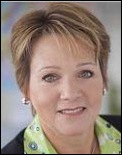
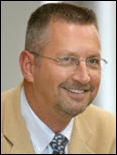


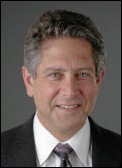


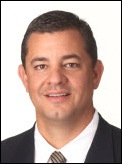

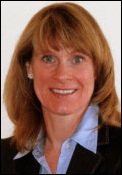


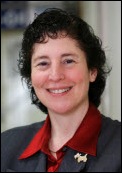


Ageed Mike, "patients are the widgets that must be processed" additionally when it costs close to $3,700 a month for…